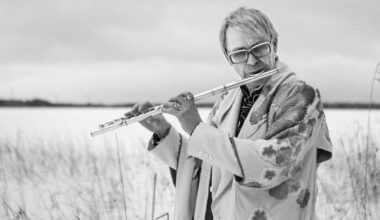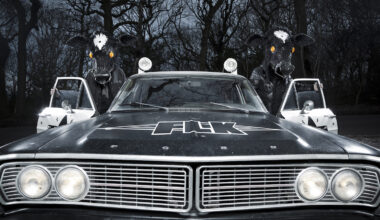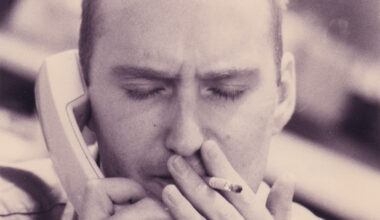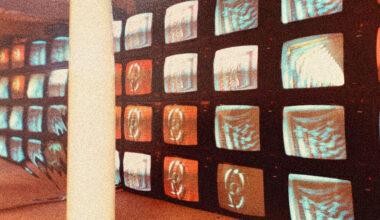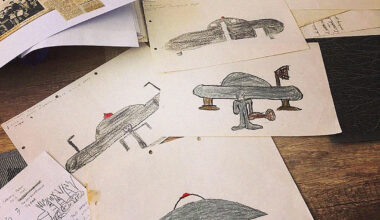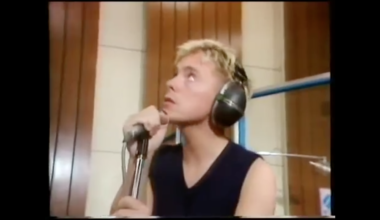In November 1968 the world encountered ‘Revolution 9’ and John Lennon and Yoko Ono in full frontal avant garde nudity. It was quite a month…

If 1967 was the year that gave us the Summer Of Love and ‘Sgt Pepper’s Lonely Hearts Club Band’, 1968 was the year of rebellion. And in November of that year, The Beatles’ ‘The White Album’ (yeah, yeah, yeah, it’s called ‘The Beatles’) was released. Two tracks addressed the year’s turbulence, ‘Revolution 1’ and ‘Revolution 9’.
Fifty years later, as ‘The White Album’ gets the lavish boxset treatment, we can hear ‘Revolution 9’ in remastered glory, but there’s still just the one version of this tape music masterpiece, as opposed to the five run-throughs of the song ‘Revolution 1’.
‘Revolution 9’ threw listeners for a loop, but Lennon had been experimenting with the techniques of tape music earlier in the year, and the results of that were also released in November 1968: ‘Unfinished Music No 1: Two Virgins’. If ‘Revolution 9’ had done their heads in, ‘Two Virgins’ pretty much finished them off. Thanks to its photo of John and Yoko in the nip on the sleeve, never mind the unlistenable racket contained in its grooves, EMI refused to distribute it, most Beatles fans couldn’t handle it, and nearly everyone else was appalled. Only 5,000 were pressed in the UK, and it sank like a stone with a stone tied around its neck.
Throughout 1968, Lennon was effectively absent from the seditious action that was bubbling up all over the Beatles’ primary markets. In March 1968, when student protests outside the American Embassy in Grosvenor Square turned violent, Lennon was in India. In May, while Paris burned, he was back in the UK ensconced in his studio in Kenwood (his country pile in Weybridge), with a new house guest, Yoko Ono, cooking up his revolution in the head. John and Yoko consummated their relationship by creating two pieces of what you might call musique concrète. These became the album ‘Unfinished Music No 1: Two Virgins’, released on 29 November in the UK.
“She came to the house and I didn’t know what to do,” Lennon later recalled of the night he invited Ono over.
“So we went upstairs to my studio and I played her all the tapes I’d made, all this far out stuff, some comedy stuff, some electronic music. She was suitably impressed and then she said, ‘Well, let’s make one ourselves’.”
Whether Lennon had a copy of Morton Subotnick’s 1967 electronic masterpiece ‘Silver Apples Of The Moon’ in his studio isn’t a matter of record, but the opening minute of ‘Two Virgins’ sounds remarkably like it. Both albums start with a high-pitched whistling. Here was Lennon experimenting, ploughing all his listening of freaky academic music into his adoration of the sound worlds created by radio comedy programmes such as ‘The Goons’.
Anything goes on ‘Two Virgins’ it seems; cavernous tape echoes of distorted signals, the clanking of a live microphone being moved, John giving Yoko instructions, a piano being poked and processed, Yoko’s incantations and screaming. When the piece does threaten to become a tune, it’s quickly abandoned, or it’s a parody, like when seven minutes in, Lennon starts vamping on the piano, only for it to mutate into fractured wails and repeating notes. Snippets of a recording of crooner Guy Lombardo’s ‘Together’ (from 1944) are fed into the mix, Lennon’s ad-libs over the top: “It’s me honey, putting the fire in!”.
Side one ends with various loops and noises dropping out, and Lennon saying, “Excuse me! Thank you…” over a bed of tape hiss. Side two continues in the same vein, by which point you must assume most Beatles fans who had bought the album will have given up hope.
For Yoko, this kind of wild experimentation was second nature. She had been a part of the radical art scene for well over a decade before meeting Lennon. Between 1956 and 1962, she was married to Toshi Ichiyanagi, still one of Japan’s best-known modern composers. He studied under John Cage, who Yoko also collaborated with, and introduced many new composers to Japan. In 1963, his first record was a seven-inch recording of his electronic music installation at an exhibition of Jean Tinguely’s kinetic sculptures in Tokyo. Another of his compositions came with the directive for musicians to play their instruments from three metres away, an instruction not a million miles from Ono’s gnomic performance art instructions. Yoko, meanwhile, was full-on Fluxus, exhibiting and staging performance art pieces every bit as challenging as her later collaborations with Lennon.
‘Two Virgins’, then, is more than 30 minutes of racket in a saucy cover. It represents the moment two minds met, when Lennon finally found someone who could not just accommodate his creative excesses, but outrun them. It’s as emotionally naked as the cover, a coming together captured in sound. It represents Lennon encountering the real avant garde in the flesh, so to speak.
A few months after recording ‘Two Virgins’, The Beatles were in the process of making ‘The White Album’. Lennon presented ‘Revolution 9’. It was an eight-minute piece of tape collage, tightly constructed, and put together with Ono with some input from George Harrison. Most people skip it, irritated by its apparent lack of musicality. But ‘Revolution 9’ has an internal flow and logic. It even has hooks; the voice repeating “number nine“, Yoko’s “If you become naked…”, and a blast of horns.
Lennon said he was trying to encapsulate the sense of revolution in sound with ‘Revolution 9’, and he succeeded. It’s raw, emotional, it’s difficult, and maddening. But so was 1968, as was Lennon’s new life he was starting with Ono.
Lennon might have sat out the protests, but he immortalised them in the most famous pieces of musique concrète ever set to vinyl.
